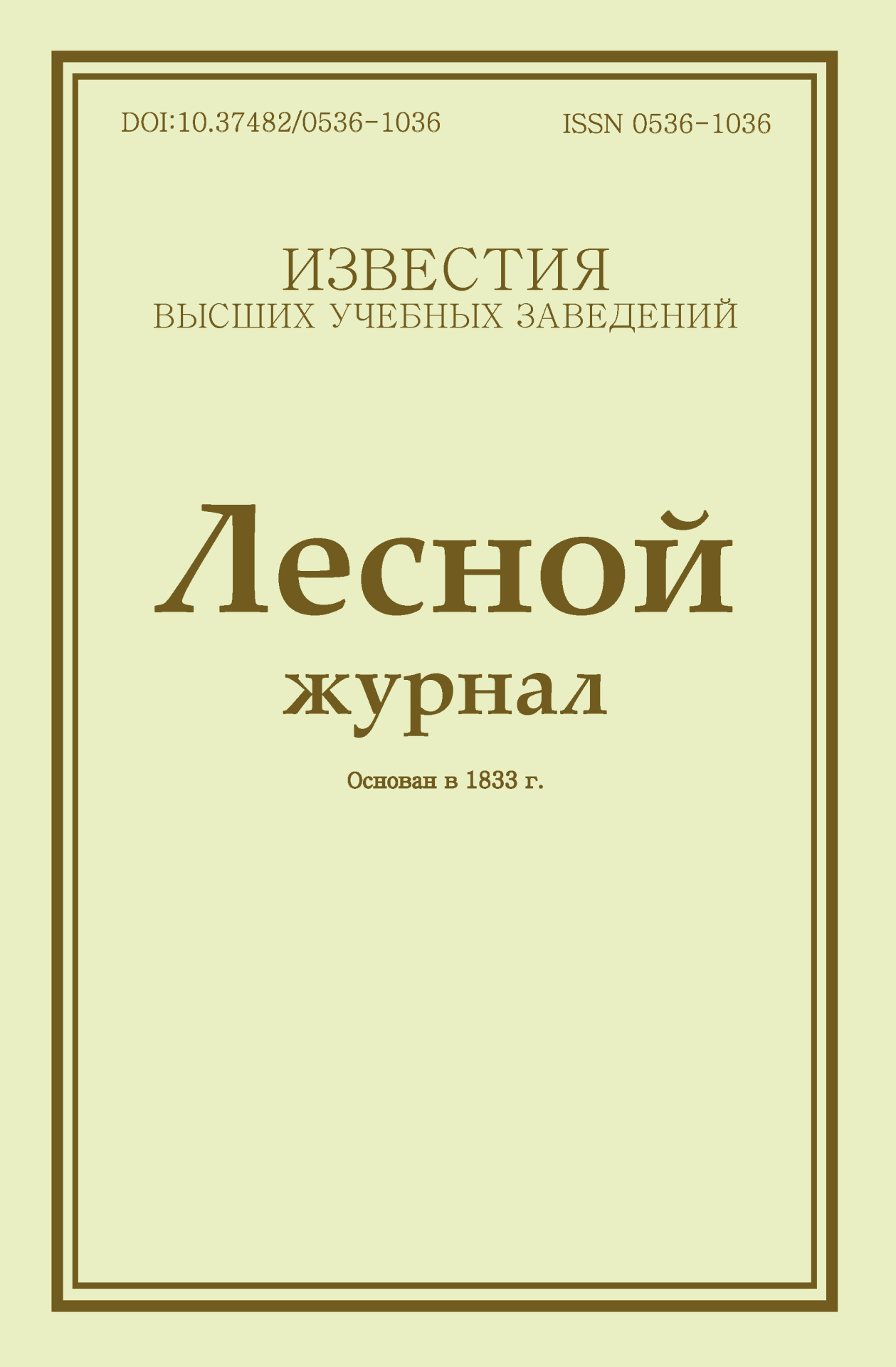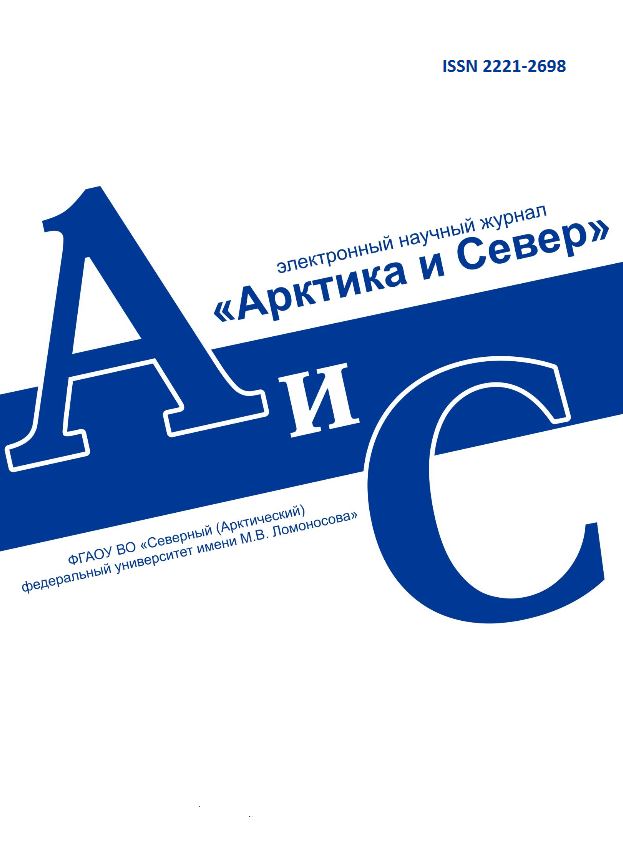
 

Legal and postal addresses of the founder and publisher: Northern (Arctic) Federal University named after M.V. Lomonosov, Naberezhnaya Severnoy Dviny, 17, Arkhangelsk, 163002, Russian Federation
Editorial office address: Journal of Medical and Biological Research, 56 ul. Uritskogo, Arkhangelsk
Phone: (8182) 21-61-00, ext.18-20
E-mail: vestnik_med@narfu.ru
https://vestnikmed.ru/en/
|
Anhidrotic Ectodermal Dysplasia in a Child Due to a Rare Mutation in the EDA Gene (a Clinical Case). С. 81-90
|
 |
Section: Medical and biological sciences
Download
(pdf, 1.6MB )
UDC
[616-007.17+575.224.22]:616.314.9
DOI
10.37482/2687-1491-Z231
Abstract
Anhidrotic ectodermal dysplasia is а heterogenous genetic disorder with multiple clinical manifestations. In medical examinations, including dental examinations, the differential aspect of diagnosis is important, since many forms of the disease have similar clinical manifestations. Of particular interest are the phenotypic effects of genetic mutations and numerous polymorphic variations of candidate genes for ectodermal dysplasia. The purpose of this study was to describe and analyse a clinical case of a patient with complete anodontia of deciduous teeth, partial anodontia of tooth buds of permanent teeth, impaired tooth formation and abnormal tooth shape due to anhidrotic ectodermal dysplasia as a result of a rare mutation in the ectodysplasin A (EDA) gene. Materials and methods. We analysed the phenotype of a male 19-month-old patient with dental pathology as a result of a disease caused by the presence of the polymorphic A allele of the EDA gene in the genotype. Further, this variation was analysed and its clinical significance was determined using the following databases: PubMed, eLIBRARY.RU, dbSNP, HGMD, GenBank, MutationTaster, PolyPhen-2, PROVEAN, and SIFT. Results. There is practically no data on the clinical significance of the c.1043C>A (р.Thr348Asn) polymorphism of the EDA gene; however the presence of clinical manifestations of the phenotype of anhidrotic ectodermal dysplasia in the patient suggests a negative effect of this single-nucleotide substitution. The described clinical case with a rare genetic disorder in dental practice is of undoubted interest to practitioners, as this pathology requires a comprehensive medical approach, long-term treatment and rehabilitation.
Keywords
anhidrotic ectodermal dysplasia, anodontia, abnormalities of teeth and jaws, EDA gene, single-nucleotide substitution
References
- Bala M., Pathak A. Ectodermal Dysplasia with True Anodontia. J. Oral Maxillofac. Pathol., 2011, vol. 15, no. 2, pp. 244–246. https://doi.org/10.4103/0973-029x.84515
- Zhang L., Yu M., Wong S.-W., Qu H., Cai T., Liu Y., Liu H., Fan Z., Zheng J., Zhou Y., Feng H., Han D. Comparative Analysis of Rare EDAR Mutations and Tooth Agenesis Pattern in EDAR- and EDA-Associated Nonsyndromic Oligodontia. Hum. Mutat., 2020, vol. 41, no. 11, pp. 1957–1966. https://doi.org/10.1002/humu.24104
- Lan R., Wu Y., Dai Q., Wang F. Gene Mutations and Chromosomal Abnormalities in Syndromes with Tooth Agenesis. Oral Dis., 2023, vol. 29, no. 6, pp. 2401–2408. https://doi.org/10.1111/odi.14402
- Gamayunov B.N., Vasilyev G.S., Pekareva N.A., Shubina E., Goltsov A.Yu. Ectodermal Dysplasia in a Child with Hypotrichosis, Scalp Erosion and Atresia of Lacrimal Points. Russ. J. Clin. Dermatol. Venereol., 2020, vol. 19, no. 6, pp. 899–903 (in Russ.). https://doi.org/10.17116/klinderma202019061899
- Smerdina Yu.G., Smerdina L.N. Genezis i klinika ektodermal’noy displazii angidroticheskoy (sindrom Krista– Simensa–Turena) [Genesis and Clinical Features of Anhidrotic Ectodermal Dysplasia (Christ–Siemens–Touraine Syndrome)]. Uspekhi sovremennogo estestvoznaniya, 2008, no. 5, pp. 138–139.
- Torgashina A.G., Firsova I.V. Simptomokompleks ektodermal’noy displazii v klinike stomatologii [Symptom Complex of Ectodermal Dysplasia in Dental Symptomatology]. Byulleten’ meditsinskikh Internet‐konferentsiy, 2013, vol. 3, no. 3, pp. 745–747.
- Eismann H., Knauer K., Künzel W., Müller M., Müller W. Störungen der Dentition und Zahnentwicklung. Kinderstomatologie. Leipzig, 1988, pp. 136–139.
- Zonana J., Elder M.E., Schneider L.C., Orlow S.J., Moss C., Golabi M., Shapira S.K., Farndon P.A., Wara D.W., Emmal S.A., Ferguson B.M. A Novel X-Linked Disorder of Immune Deficiency and Hypohidrotic Ectodermal Dysplasia Is Allelic to Incontinentia Pigmenti and Due to Mutations in IKK-Gamma (NEMO). Am. J. Hum. Genet., 2000, vol. 67, no. 6, pp. 1555–1562. https://doi.org/10.1086/316914
- McGrath J.A., Duijf P.H., Doetsch V., Irvine A.D., de Waal R., Vanmolkot K.R., Wessagowit V., Kelly A., Atherton D.J., Griffiths W.A., Orlow S.J., van Haeringen A., Ausems M.G., Yang A., McKeon F., Bamshad M.A., Brunner H.G., Hamel B.C., van Bokhoven H. Hay–Wells Syndrome Is Caused by Heterozygous Missense Mutations in the SAM Domain of p63. Hum. Mol. Genet., 2001, vol. 10, no. 3, pp. 221–229. https://doi.org/10.1093/hmg/10.3.221
- Rinne T., Hamel B., van Bokhoven H., Brunner H.G. Pattern of p63 Mutations and Their Phenotypes – Update. Am. J. Med. Genet. A, 2006, vol. 140, no. 13, pp. 1396–1406. https://doi.org/10.1002/ajmg.a.31271
- Zelenova M.A., Vorsanova S.G., Yurov Yu.B., Kurinnaya O.S., Voinova V.Yu., Yurov I.Yu. Duplikatsiya gena EDA u mal’chika s rasstroystvom autisticheskogo spektra i zaderzhkoy razvitiya: molekulyarno-tsitogeneticheskoe, bioinformaticheskoe i psikhologicheskoe issledovanie redkoy genomnoy patologii [Duplication of EDA Gene in a Boy with Autism Spectrum Disorder and Developmental Delay: Molecular Cytogenetic, Bioinformatic and Psychological Investigation of Rare Genomic Pathology]. Mezhdunarodnyy zhurnal prikladnykh i fundamental’nykh issledovaniy, 2017, no. 7-1, pp. 97–101.
- Gaide O., Schneider P. Permanent Correction of an Inherited Ectodermal Dysplasia with Recombinant EDA. Nat. Med., 2003, vol. 9, no. 5, pp. 614–618. https://doi.org/10.1038/nm861
- Filippova V.V., Neretina I.A., Matveeva E.A., Ershova N.M. Angidroticheskaya ektodermal’naya displaziya. Sindrom Krista–Simensa–Turena. Diagnosticheskaya odisseya [Anhidrotic Ectodermal Dysplasia. Christ–Siemens– Touraine Syndrome. Diagnostic Odyssey]. Zdravookhranenie Dal’nego Vostoka, 2023, no. 4, pp. 17–22.
- Muzychina A.A., Bugorkova I.A., Tutova K.S., Muzychina A.V. Sindrom Krista–Simensa–Turena u rebenka (klinicheskiy sluchay) [Christ–Siemens–Touraine Syndrome in a Child (Case Report)]. Meditsinsko-sotsial’nye problemy sem’i, 2019, vol. 24, no. 2, pp. 117–120.
- Mikkola M.L., Thesleff I. Ectodysplasin Signaling in Development. Cytokine Growth Factor Rev., 2003, vol. 14, no. 3–4, pp. 211–224. https://doi.org/10.1016/s1359-6101(03)00020-0
- Coe B.P., Witherspoon K., Rosenfeld J.A., van Bon B.W., Vulto-van Silfhout A.T., Bosco P., Friend K.L., Baker C., Buono S., Vissers L.E., et al. Refining Analyses of Copy Number Variation Identifies Specific Genes Associated with Developmental Delay. Nat. Genet., 2014, vol. 46, no. 10, pp. 1063–1071. https://doi.org/10.1038/ng.3092
- Vorsanova S.G., Yurov Y.B., Iourov I.Y. Neurogenomic Pathway of Autism Spectrum Disorders: Linking Germline and Somatic Mutations to Genetic-Environmental Interactions. Curr. Bioinform., 2017, vol. 12, no. 1, pp. 19–26. http://dx.doi.org/10.2174/1574893611666160606164849
- Kovalskaia V.A., Cherevatova T.B., Polyakov A.V., Ryzhkova O.P. Molecular Basis and Genetics of Hypohidrotic Ectodermal Dysplasias. Vavilov J. Genet. Breed., 2023, vol. 27, no. 6, pp. 676–683. https://doi.org/10.18699/VJGB-23-78
- Yu K., Sheng Y., Wang F., Yang S., Wan F., Lei M., Wu Y. Eight EDA Mutations in Chinese Patients with Tooth Agenesis and Genotype–Phenotype Analysis. Oral Dis., 2024, vol. 30, no. 7, pp. 4598–4607. https://doi.org/10.1111/odi.14878
- Ranjan P., Das P. Understanding the Impact of Missense Mutations on the Structure and Function of the EDA Gene in X-Linked Hypohidrotic Ectodermal Dysplasia: A Bioinformatics Approach. J. Cell. Biochem., 2022, vol. 123, no. 2, pp. 431–449. https://doi.org/10.1002/jcb.30186
- Gökdere S., Schneider H., Hehr U., Willen L., Schneider P., Maier-Wohlfart S. Functional and Clinical Analysis of Five EDA Variants Associated with Ectodermal Dysplasia but with a Hard-to-Predict Significance. Front. Genet., 2022, vol. 13. Art. no. 934395. https://doi.org/10.3389/fgene.2022.934395
- Bao D.-Y., Yang Y., Tong X., Qin H.-Y. Activation of Wnt/β-Catenin Signaling Pathway Down Regulated Osteogenic Differentiation of Bone Marrow-Derived Stem Cells in an Anhidrotic Ectodermal Dysplasia Patient with EDA/ EDAR/EDARADD Mutation. Heliyon, 2023, vol. 10, no. 1. Art. no. e23057. https://doi.org/10.1016/j.heliyon.2023.e23057
- Wohlfart S., Hammersen J., Schneider H. Mutational Spectrum in 101 Patients with Hypohidrotic Ectodermal Dysplasia and Breakpoint Mapping in Independent Cases of Rare Genomic Rearrangements. J. Hum. Genet., 2016, vol. 61, no. 10, pp. 891–897. https://doi.org/10.1038/jhg.2016.75
- Yu K., Huang C., Wan F., Jiang C., Chen J., Li X., Wang F., Wu J., Lei M., Wu Y. Structural Insights into Pathogenic Mechanism of Hypohidrotic Ectodermal Dysplasia Caused by Ectodysplasin A Variants. Nat. Commun., 2023, vol. 14, no. 1. Art. no. 767. https://doi.org/10.1038/s41467-023-36367-6
- Zhao Z., Zhang T., Li T., Ye Y., Feng C., Wang H., Zhang X. A Novel EDAR Variant Identified in Non-Syndromic Tooth Agenesis: Insights from Molecular Dynamics. Arch. Oral Biol., 2023, vol. 146. Art. no. 105600. https://doi.org/10.1016/j.archoralbio.2022.105600
- Gao Y., Jiang X., Wei Z., Long H., Lai W. The EDA/EDAR/NF-κB Pathway in Non-Syndromic Tooth Agenesis: A Genetic Perspective. Front. Genet., 2023, vol. 14. Art. no. 1168538. https://doi.org/10.3389/fgene.2023.1168538
- Wright J.T., Fete M., Schneider H., Zinser M., Koster M.I., Clarke A.J., Hadj-Rabia S., Tadini G., Pagnan N., Visinoni A.F., Bergendal B., Abbott B., Fete T., Stanford C., Butcher C., D’Souza R.N., Sybert V.P., Morasso M.I. Ectodermal Dysplasias: Classification and Organization by Phenotype, Genotype and Molecular Pathway. Am. J. Med. Genet. A, 2019, vol. 179, no. 3, pp. 442–447. https://doi.org/10.1002/ajmg.a.61045
- Adhikari K., Fontanil T., Cal S., Mendoza-Revilla J., Fuentes-Guajardo M., Chacón-Duque J.-C., Al-Saadi F., Johansson J.A., Quinto-Sanchez M., Acuña-Alonzo V., et al. A Genome-Wide Association Scan in Admixed Latin Americans Identifies Loci Influencing Facial and Scalp Hair Features. Nat. Commun., 2016, vol. 7. Art. no. 10815. https://doi.org/10.1038/ncomms10815
- Wu S., Zhang M., Yang X., Peng F., Zhang J., Tan J., Yang Y., Wang L., Hu Y., Peng Q., Li J., Liu Y., Guan Y., Chen C., Hamer M.A., Nijsten T., Zeng C., Adhikari K., Gallo C., Poletti G., Schuler-Faccini L., Bortolini M.C., Canizales-Quinteros S., Rothhammer F., Bedoya G., González-José R., Li H., Krutmann J., Liu F., Kayser M., Ruiz-Linares A., Tang K., Xu S., Zhang L., Jin L., Wang S. Genome-Wide Association Studies and CRISPR/Cas9-Mediated Gene Editing Identify Regulatory Variants Influencing Eyebrow Thickness in Humans. PLoS Genet., 2018, vol. 14, no. 9. Art. no. 1007640. https://doi.org/10.1371/journal.pgen.1007640
- Ponomarenko I.V. Otbor polimorfnykh lokusov dlya analiza assotsiatsiy pri genetiko-epidemiologicheskikh issledovaniyakh [Selection of Polymorphic Loci for Association Analysis in Genetic-Epidemiological Studies]. Nauchnyy rezul’tat. Meditsina i farmatsiya, 2018, vol. 4, no. 2, pp. 40–54. https://doi.org/10.18413/2313-8955-2018-4-2-0-5
|
Make a Submission









Vestnik of NArFU.
Series "Humanitarian and Social Sciences"
.jpg)
Forest Journal

Arctic and North


|




.jpg)

